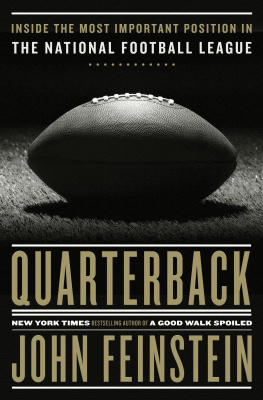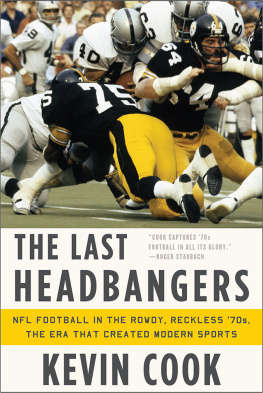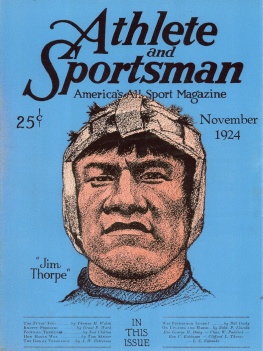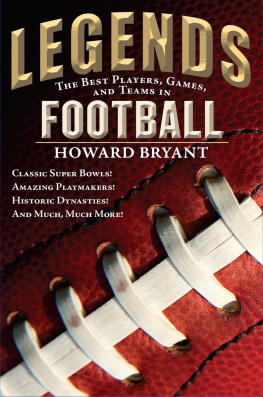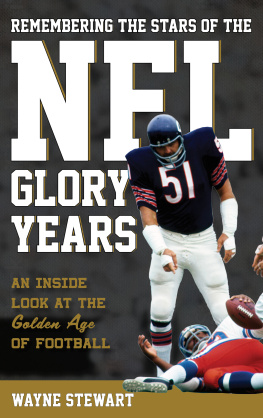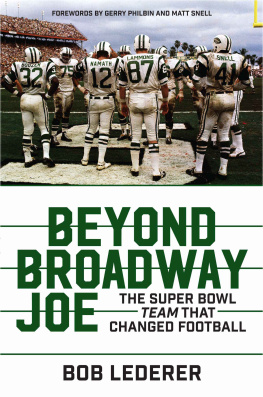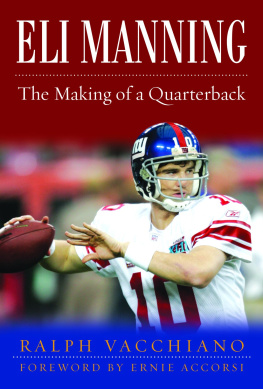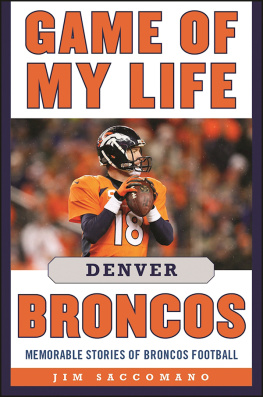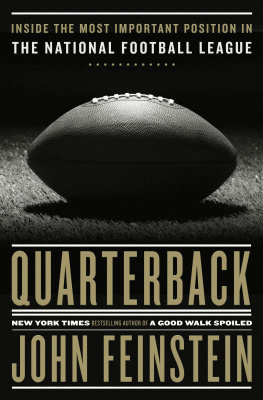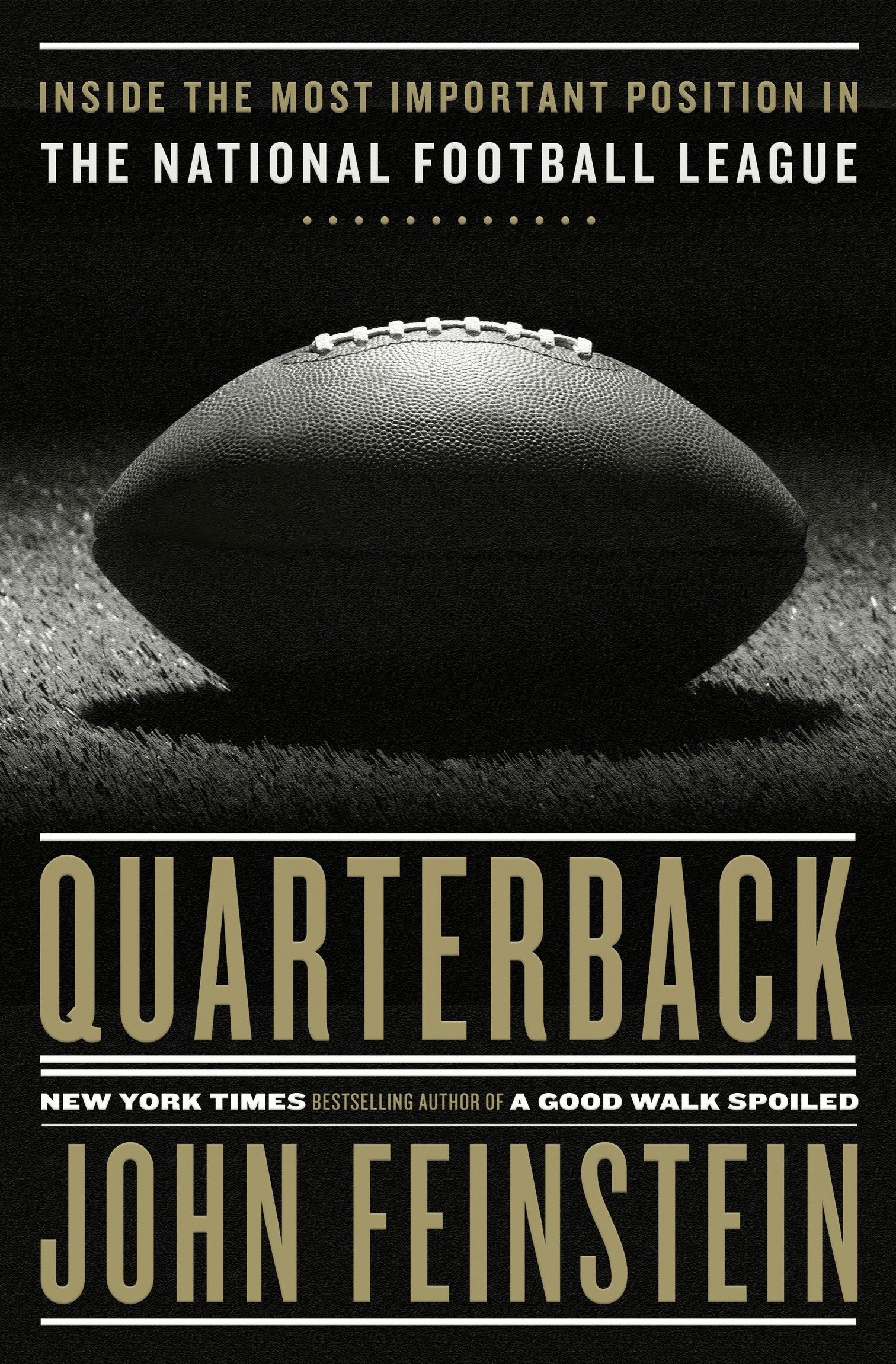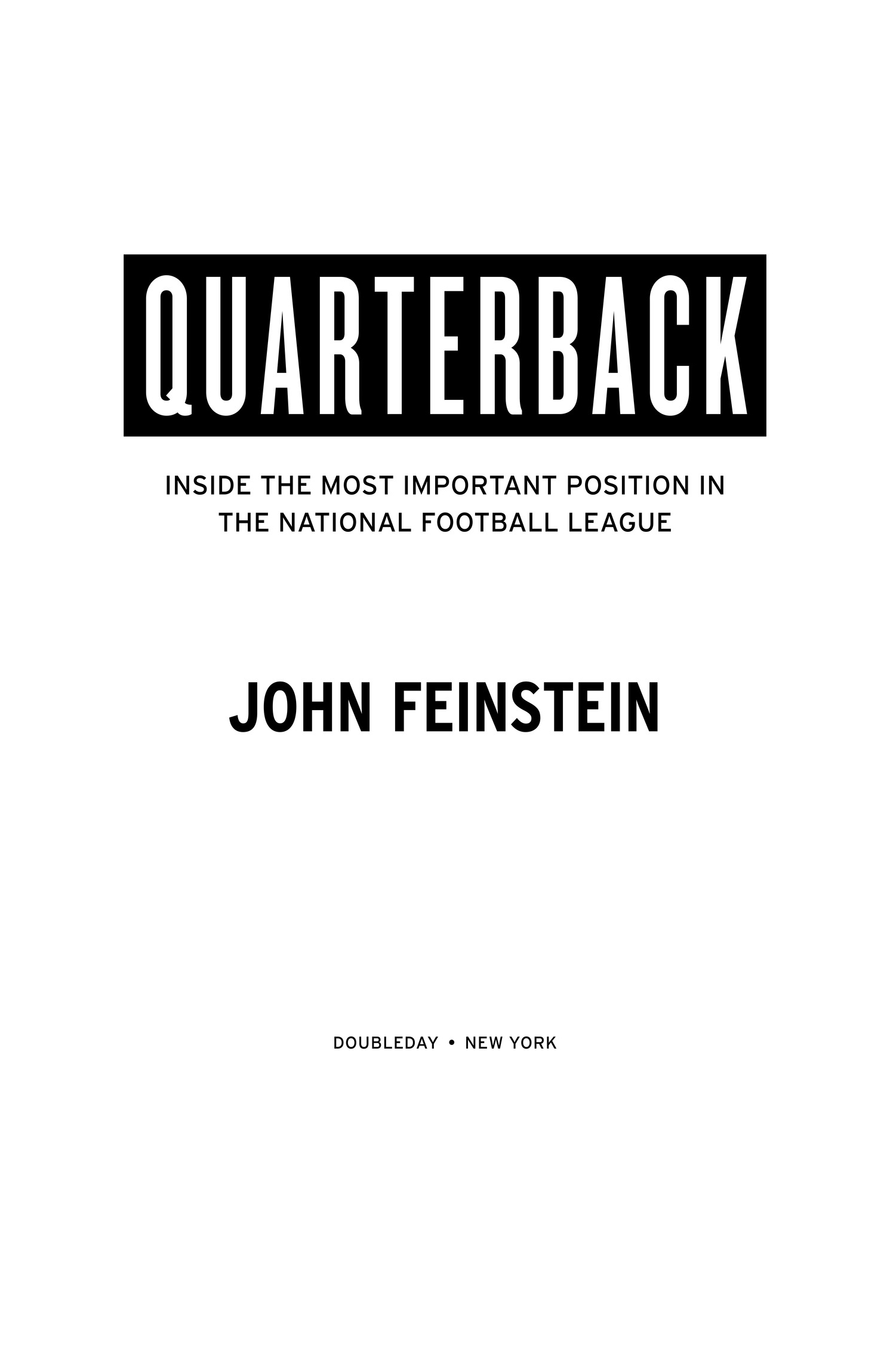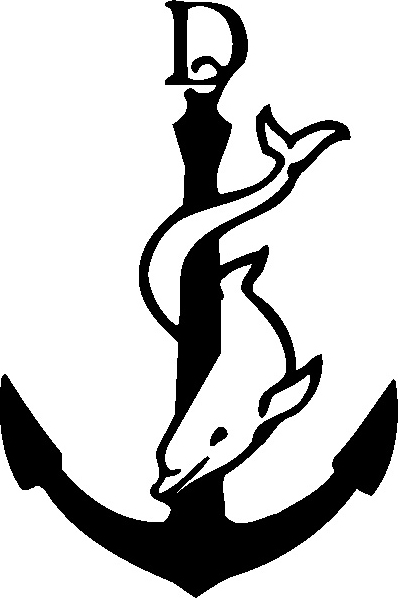All rights reserved. Published in the United States by Doubleday, a division of Penguin Random House LLC, New York, and distributed in Canada by Random House of Canada, a division of Penguin Random House Canada Limited, Toronto.
DOUBLEDAY and the portrayal of an anchor with a dolphin are registered trademarks of Penguin Random House LLC.
INTRODUCTION
On the afternoon of October 1, 2017, the Pittsburgh Steelers and Baltimore Ravens met in Baltimore, in what was billed by the media as a battle for first place, in the National Football Leagues AFC North Division.
Both teams were 2-1, but the Ravens record was deceiving. They had opened the season by beating the decidedly mediocre Cincinnati Bengals and then had beaten the historically bad Cleveland Browns in week two before traveling to London to get pounded 447 by a surprisingly good Jacksonville team.
The Steelers had also beaten the Browns and had then beaten the Minnesota Vikings before losingstunninglyto the Chicago Bears on the road.
In short, people were still trying to figure out how good the two teams were, and this game would certainly provide some clues.
The Ravens had not had a good off-season. Their most reliable receiver, Dennis Pitta, had suffered a career-ending hip injury during one of their mini-campsor as theyre now called in NFL vernacular, OTAsOrganized Team Activities. The teams 2015 first-round draft pick, wide receiver Breshaud Perriman, had blazing speed; his 4.29 40-yard dash had wowed Baltimores scouts. He had just one weakness: an inability to actually catch a football on a regular basis, a glaring issue given that his job was to catch footballs.
Both starting guards, including Pro Bowler Marshal Yanda, were out for the season. There was no consistent running back, unless you counted Alex Collins, a talented rookie with a penchant for fumbling. Danny Woodhead, an excellent third-down receiver acquired during the off-season wasyou guessed itinjured.
Joe Flacco had been the Ravens starting quarterback for ten yearshaving been drafted in 2008 out of the University of Delaware. His arrival had ended a search for a solid quarterback that had started when the team first moved from Cleveland prior to the 1996 season. The Ravens had actually won a Super Bowl after the 2000 season with Trent Dilfer playing quarterback, largely because they had put together one of the great defenses in league history.
General manager Ozzie Newsome had taken Flacco with the eighteenth pick in the 08 draft at the urging of scouting director Eric DeCosta, who had gone to see Delaware play at Navy the previous October and had left the game at halftime with stars in his eyes.
I was supposed to go to a game at Maryland [twenty-eight miles away from NavyMarine Corps Memorial Stadium] later that afternoon, he said. I was so excited about Flacco, I went back to the office and began digging out any tape of him I could find.
Flacco was six feet six, weighed 240 pounds, and had a cannon for an arm. He looked effortless throwing the ball downfield, and, even though Navys defense that year wasnt very good, DeCosta watched in awe as Flacco made difficult throws look easy.
Ten years later, Flacco had won a Super Bowl and had been, for a while, the highest-paid player in the NFL. Even though other quarterbacks had surpassed him in total dollars, Flacco was still doing just fine. He was in the second year of a six-year contract worth $120.6 million. At thirty-two, he was, without question, the face of the Ravens franchise.
Which meantas with almost every starting quarterback in the NFLhe often went from toast-of-the-town to roasted-by-the-town from week to week. Most of the time the criticism rolled off Flaccos broad back. He had acquired the nickname of Cool Joe early on because his demeanor almost always stayed the same. If you were going strictly off facial expressions or body language, it was difficult to tell if Flacco had just thrown a touchdown pass or an interception.
The criticism comes with the territory, he said with a smile. If youre going to accept being put on a pedestal when you play well, you better be ready to accept getting chopped down when you dont play well.
Even when its not your fault? I asked one day.
Its always my fault, he said.
On that warm October afternoon on their home turf against the Steelers, it was Flaccos fault. Even if he had plenty of help.
The Ravens were bad. They trailed 190 at halftime and lost 269 in a game that really wasnt that close. Flacco threw two fourth-quarter interceptionsone a deflectionand Collins had a critical first-half fumble. The defense, which had caused ten turnovers in the first two games, couldnt get Ben Roethlisberger and the Steelers off the field.
In all, it was a long day for all the Ravens. It began with the team kneeling as one prior to the playing of the national anthem. This was a week after Donald Trumps rant about players not standing for the anthem, and the Ravens had decided to take a knee together before the anthem. Even though the song hadnt yet begun and the entire team was standing when the music started, many fans booed the gesture.
The boos would have been quickly forgotten had the team played better. But it didnt, and the boos were heard frequently during the second halfexcept for a brief period when the Ravens rallied to close the deficit to 199.
After the game ended with the stands half empty and the Steelers walking away with a 269 victory, Flacco was brought into the interview room by the Ravens public relations staff.
Every NFL quarterback comes into the interview room postgame. Most wait as long as possible before going in. They chat with teammates, shower, dress, and, as their final act before leaving the stadium to meet their families, come in to talk to the media. They can take as long as they want to, because there are two people the media must listen to after a game: the head coach and the quarterback. The coach usually goes in as soon as the locker room is opened to the media. The quarterback almost always goes lastoften forty-five minutes to an hour after the game has ended.

